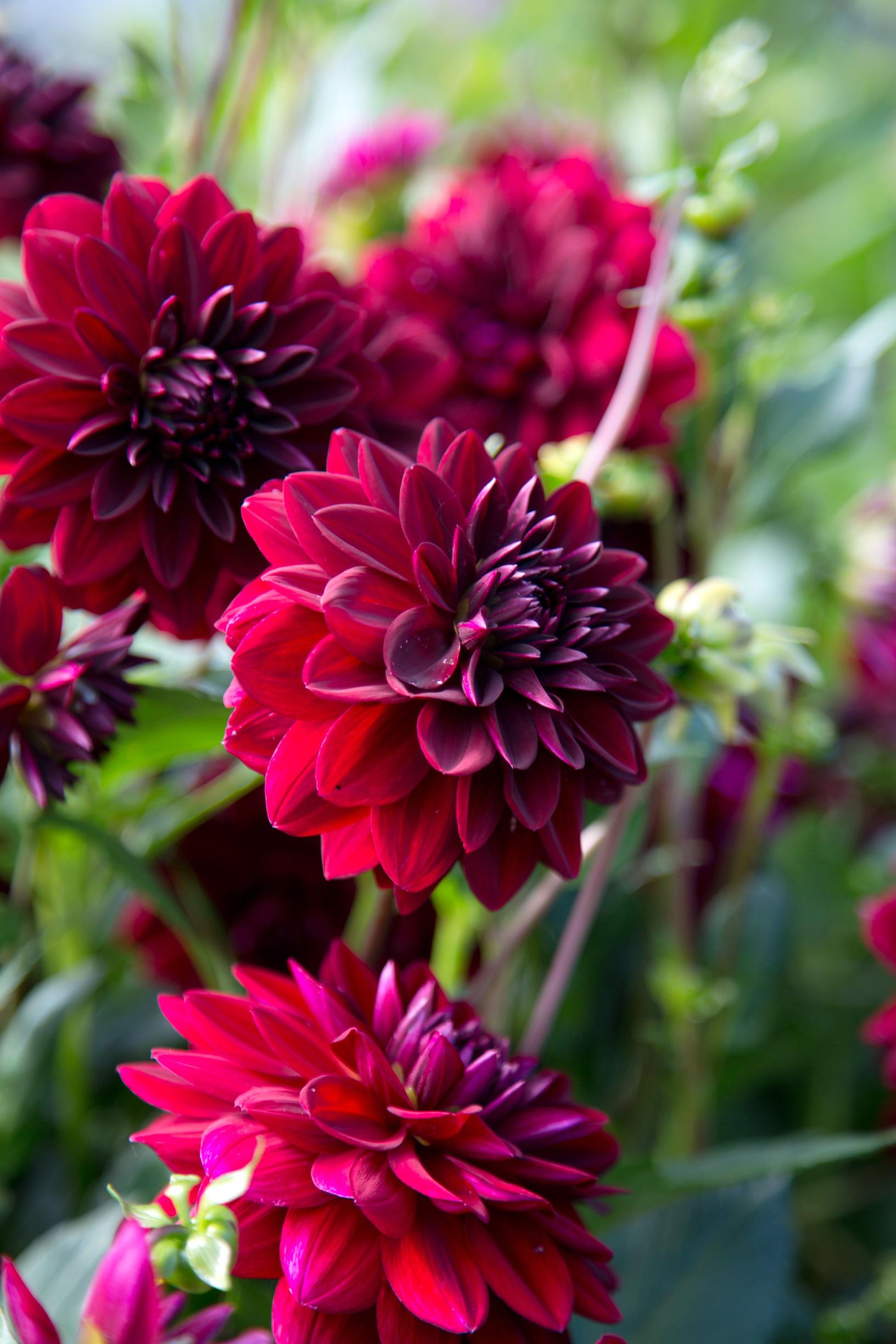
Growing and caring for dahlias: here’s how to make them flourish year after year
With attentive care, dahlias reward home gardeners with magnificent, long-lasting blooms year after year—just remember to lift the tubers and take them to storage in autumn. See our comprehensive guide on growing and caring for dahlias!
Dahlias have been growing in popularity year after year. Enthusiasts exchange and share tubers from heirloom dahlia strains, and new hybrids are constantly being developed.
Dahlias delight with their splendor from July onwards, keeping the garden in abundant bloom for a long time.
Originating from Mexico, dahlias offer varieties to suit every taste. With their abundant flowers, you can adorn a romantic, lush garden or add striking color accents to a modern yard.
Dahlia care—here’s how to make your dahlias flourish:
Ideal growing site for dahlias
Dahlias thrive both in pots and when planted directly into the ground.
If you want your dahlias to flourish, plant them in a warm, sunny, or semi-shaded spot, such as along a sheltered wall. A sunny terrace or balcony is ideal if you plant your dahlias in pots.
A nutrient-rich growing medium suits dahlias, so it’s worth enriching your planting soil with compost soil.

Planting dahlias
Dahlias are sensitive to frost. Plant them outdoors only after the threat of frost has passed. Alternatively, you can carefully protect your dahlias. In the southern parts of Finland, tubers can be planted directly into the ground, but further north, pre-cultivation is recommended to accelerate flowering.
Dahlias grown from seeds should be sown in April. This way, they will bloom towards the end of summer.
Seedlings grown in overly warm conditions with insufficient light easily become tall and tender as they stretch towards the light. Seedlings grown in cooler conditions tend to become sturdier. Gradually harden off the seedlings to the outdoors, as the strong early summer sunlight can scorch the delicate seedlings.
Plant dahlias so that approximately 5–10 centimeters of soil covers the tuberous roots. Ensure that the last year’s stem stub is facing upwards. Water thoroughly to encourage rooting.
Planting dahlias in their own group makes it easy to lift the tubers in the autumn without disturbing the roots of other plants. If you want some variety in your flower bed, suitable companions for dahlias include tropical plants like cannas. Like dahlias, they are dug up in autumn and overwintered in a cool place. When planting in a container, choose low-growing varieties.

Watering and fertilizing dahlias
Dahlias need plenty of water but do not tolerate waterlogged roots. Dahlias growing in pots dry out easily, so remember to water them regularly.
To flourish, dahlias require plenty of nutrients, especially nitrogen. During the bud development stage, fertilize with a balanced garden fertilizer mixed into the watering can.
A surprise between the potato beds! Anu Jokela has dedicated her allotment to dahlias and other colorful cut flowers.Take a peek into Anu’s beautiful flower plot and read the story. [in Finnish]

Supporting dahlias
The tallest varieties should be supported early, as dahlia stems can break in windy locations. You can use hoop supports or stakes with soft twine to support your dahlias.
Caring for dahlias during the summer
Deadhead spent flowers. Remove any caterpillars from your dahlias and get rid of slugs.

Overwintering dahlias
- Protect the delicate dahlias with garden fabric from the first frosts in the autumn.
- After they’ve been exposed to frost, the leaves and stem turn black. Cut off the blackened growth, but leave the tuber in the ground to mature a bit longer. If it’s rainy, cover the tubers and soil with plastic to allow them to mature undisturbed.
- About a week later, carefully lift the tuber from the ground using a garden fork, clean off the soil, and take it to a cellar or storage area to dry.
- Label the tubers with their color and growth height so that next spring you know where to plant each of them.
- Place the slightly dried out tubers into sand or peat, or in a paper bag, and take them to a cool place where the temperature doesn’t drop below freezing. A mostly dry space at about 5 degrees Celsius is best for overwintering dahlia tubers.
- During the winter, check that the tubers you’ve stored for overwintering don’t dry out. Water or mist them lightly if the surface of the tubers looks wrinkled. However, be careful of excessive moisture to prevent the tubers from rotting.
- Around the end of April, bring the tubers into the light and water them. Divide the tubers if necessary.
Over the years, the growing set of tubers will bring even more floral splendor to your garden, rewarding the effort of overwintering. See instructions with pictures for overwintering dahlias.
Tips for growing dahlias
- You can acquire dahlias in late winter as tubers, as seedlings sold as annuals, or grow them yourself from seeds.
- Cutting the main shoot, or pinching, makes the plants bushier, and removing faded flowers enhances blooming.
- Dahlias also hold up well in a vase, so the beauties from your garden can be enjoyed in bouquets too.

Dahlias are loved by everyone now! But where did the hype start? The superstar of the floral craze is found at a small flower farm in the United States—read the story of Floret Flower Farm, founded by Erin Benzakein. [in Finnish]

Choose your favorites from the variety of dahlias
Dahlias have both single-flowered and lush double-flowered varieties. The smallest flowers are a few centimeters in size; the largest grow up to nearly twenty centimeters in diameter.
The color range is wide—from pure white to cream, yellow and orange, pale pink to deep burgundy, even multicolored varieties.
Discover various dahlia varieties in our article! [in Finnish]


